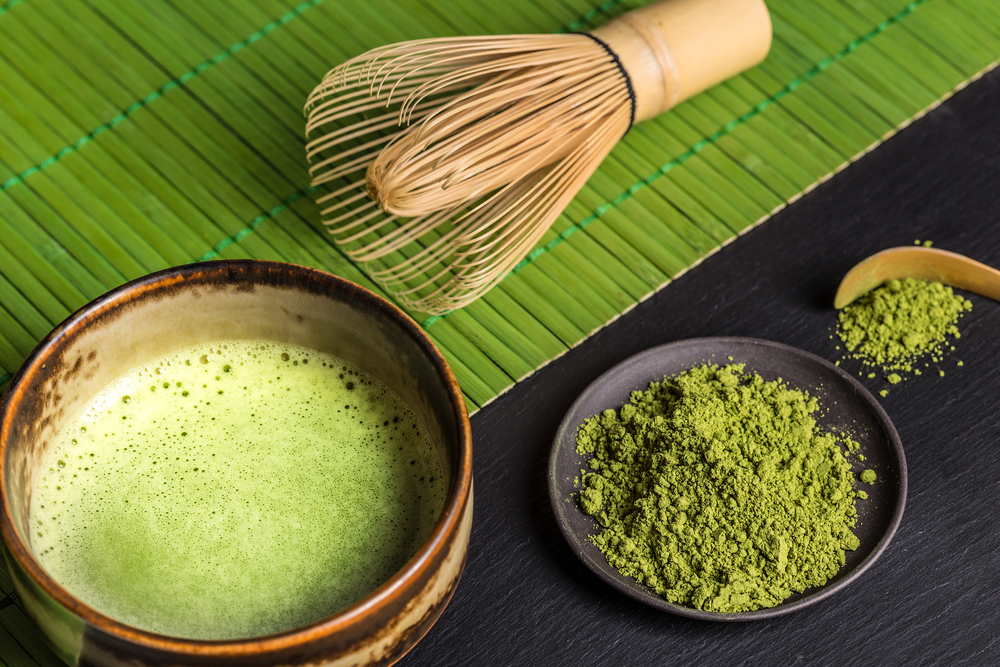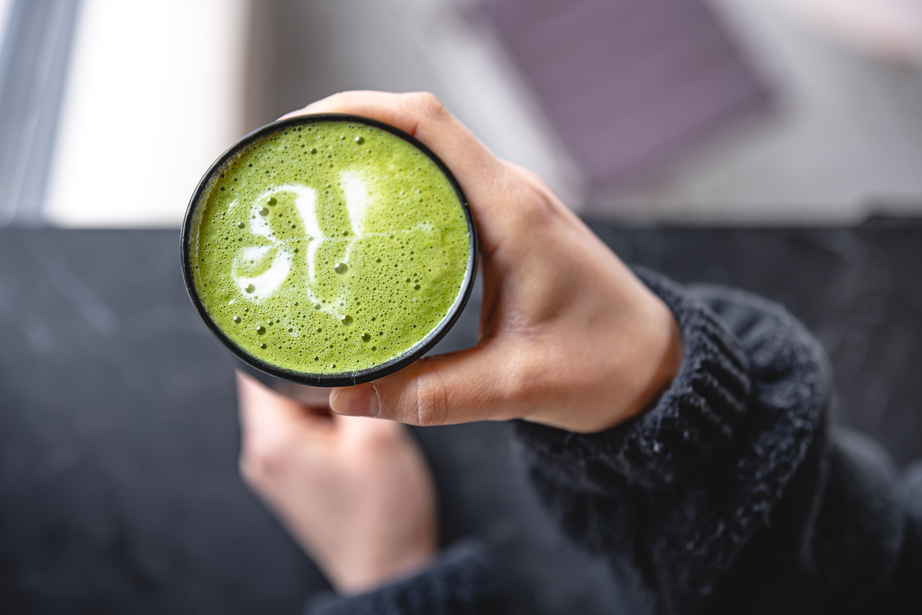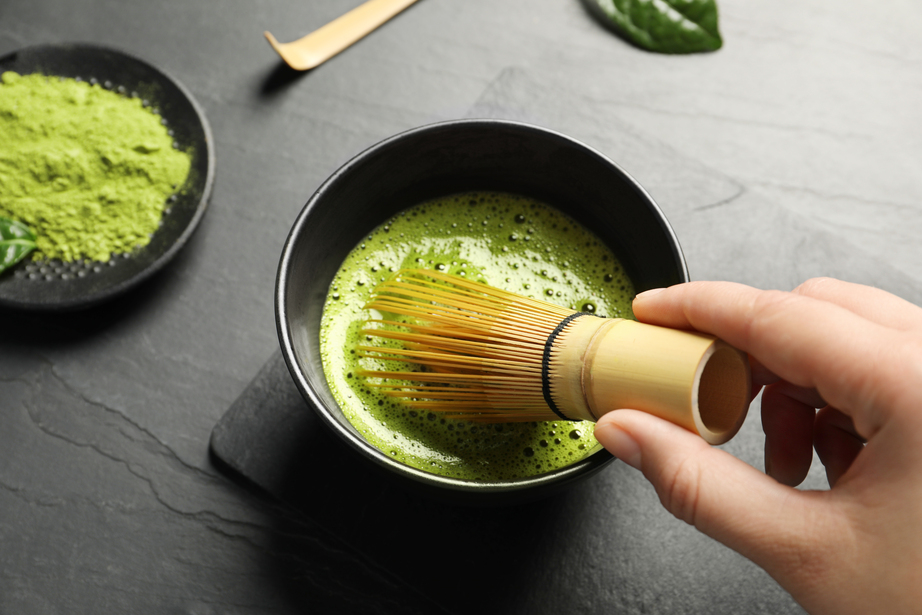What is Matcha? Properties, Taste, and Brewing Method of Japanese Green Tea

Recently, matcha has become more commonly heard of. This powdered green tea of Japanese origin is taking the world by storm. Some tea enthusiasts drink it simply for its taste, while others do so for its health benefits. The secret to its popularity lies in its high antioxidant content. What’s even more intriguing is that research suggests it may have up to ten times the antioxidant concentration compared to traditional green tea.
What exactly is matcha, and how do you brew it? What does this unique drink taste like, and why is it worth incorporating into your daily routine? Where can you buy matcha? Below, we present the most important information about Japanese green tea, which can surprise not only with its color and aroma but also with its health effects.
Table of contents
- What is Matcha?
- History and Growing Process of Matcha
- What Does Matcha Taste Like?
- Health Benefits of Drinking Matcha
- How Often Should You Drink Matcha?
- How to Properly Brew Matcha?
- How to Drink Matcha? Matcha Latte, with Water, or in a Cocktail?
- Homemade Matcha Latte Recipe
- Can Everyone Drink Matcha?
- Matcha from A to Z: The Japanese Secret of Health and Vitality - Summary
What is Matcha?
Matcha is powdered green tea made from the leaves of Camellia sinensis, traditionally used in the Japanese tea ceremony (cha-no-yu). It appears as a silky powder with a characteristic emerald green color. Unlike traditional green tea infusions, matcha includes whole, powdered leaves, which results in a much higher concentration of active ingredients.
Thanks to its excellent health properties and unique taste, matcha has gained popularity worldwide. It’s one of the oldest types of Japanese tea, initially grown on mysterious monastery plantations. Drinking matcha was historically associated with relaxation, meditation, and a meaningful ceremonial practice.
By consuming matcha, you can deliver far more nutrients (such as amino acids, vitamins, minerals, and fiber) to your body than with regular green tea. Due to its high content of caffeine and beneficial catechins, some people refer to matcha as "the espresso of tea."
Types of Matcha (Ceremonial and Culinary)
There are two main types of matcha available for purchase. Ceremonial matcha is made from young leaves and has been used in traditional Japanese tea preparation for centuries. It’s delicate, bright in color, and has a silky texture.
Culinary matcha is made from older leaves and is typically used in baking, cocktails, ice cream, or to prepare matcha lattes. Although it’s slightly less mild in taste, it still retains a significant amount of health benefits.
History and Growing Process of Matcha
Matcha is produced from the highest quality Tencha leaves, harvested from shrubs that are shaded for about 20 to 30 days before being picked. The origins of this magnificent beverage, known worldwide, trace back to the Tang Dynasty in China. Matcha was brought to Japan by Buddhist monks in the early 12th century, quickly becoming an integral part of the traditional tea ceremony.
The leaves used to prepare matcha are handpicked, steamed, and ground into a fine powder using millstones. Interestingly, the shading of the tea plants about a month before harvesting must reach around 90%. This process increases the amount of chlorophyll in the leaves, which then transforms into catechins.
Today, matcha stands as a symbol of Japanese culture and tradition. Due to the special care and conditions required to grow tea shrubs, it is considered an exceptionally valuable and unique product. What makes it extraordinary is its high content of amino acids, vitamins, fiber, and antioxidants.
What Does Matcha Taste Like?
Now that you know what matcha is and how it’s produced, what about its taste? Because the leaves are handpicked and ground using large, round millstones, matcha has an intense flavor. Its aroma is slightly bitter, with subtle grassy notes and a hint of sweetness.
What truly distinguishes high-quality Japanese matcha is its umami. This is one of the five basic tastes (alongside sweet, salty, sour, and bitter) and comes from the natural amino acid glutamate, which gives the tea a rich, contrasting, and intense aroma.

Health Benefits of Drinking Matcha
In Japan, matcha is renowned for its numerous health benefits. Japanese people refer to it as ‘the health elixir’ for good reason. The multifunctionality of matcha and its beneficial properties make it one of the most powerful superfoods in the world.
Thanks to its high concentration of EGCG (a uniquely strong antioxidant), L-theanine, and caffeine, regular consumption of matcha:
- Helps improve energy levels
- Supports metabolism and fat burning
- Improves sleep quality
- Reduces bad cholesterol levels (LDL) and stabilizes blood sugar
- Supports the circulatory system and protects the heart
- Has antibacterial and antiviral effects
- Enhances memory, focus, and reduces stress
- Aids in body detoxification through chlorophyll
People who are just starting their journey with matcha often wonder if it has an energizing effect, how much caffeine it contains, and if it’s healthier than coffee. It’s worth mentioning that L-theanine, an amino acid naturally found in tea leaves, helps promote relaxation and makes it easier to concentrate.
In addition to the elements mentioned above, matcha also contains vitamin A, vitamin C, B vitamins, chlorophyll, polyphenols, and trace minerals.
How Often Should You Drink Matcha?
To reap the health benefits of matcha and improve your overall well-being, it’s recommended to consume 1-2 cups per day. You can incorporate it into your daily morning or afternoon tea ritual to experience the positive effects on your mood and energy levels.
When is the Best Time to Drink Matcha?
Due to its high caffeine content, it’s recommended to drink matcha in the morning or early afternoon. When consumed at these times, it acts as a mild alternative to coffee, providing mental clarity without overstimulation. We suggest limiting matcha consumption in the evening, especially right before bed, as it could cause difficulty falling asleep.
How Much Matcha Should You Drink Daily?
A safe dose of matcha is 1-2 teaspoons of powder, which is enough for one or two cups. Excessive amounts of active ingredients in the tea can have a burdening effect on the digestive system or cause nervousness, especially among those who are sensitive to caffeine. Therefore, it’s important to consume this extraordinary drink in moderation, paying attention to how your body reacts.
How to Properly Brew Matcha?
Drunk as part of a morning or early afternoon ritual, green tea matcha, rich in antioxidants, is a perfect and beneficial addition to your daily diet. Its versatility allows it to be enjoyed not only as a beverage but also as a seasoning to enhance the flavor of various meals and desserts.
To brew matcha for the best results, you can prepare it traditionally with a bamboo whisk and a glass bowl, or in a modern way using a milk frother.
To extract the full taste and aroma of matcha, it’s best to use water at 60-70°C (140-158°F). Place a teaspoon of matcha powder into a tall glass and then mix with water, stirring dynamically to achieve a smooth, delicately foamed consistency. The matcha is ready to drink immediately after preparation.
How to Drink Matcha? Matcha Latte, with Water, or in a Cocktail?
Japanese matcha is delicious as a simple brew, but it’s also great in other forms. Matcha latte is a popular alternative to traditional tea, prepared and served with frothed cow or plant-based milk. You can use matcha powder to prepare cocktails, ice cream, cakes, or oatmeal. This allows you to enjoy a healthy beverage or a tasty snack filled with vitamins, minerals, and antioxidants.

Homemade Matcha Latte Recipe
Among healthy lifestyle enthusiasts, matcha lattes have become increasingly popular—this beverage is made with green tea and milk. How can you prepare it at home?
To make a delicious homemade matcha latte, you will need the following ingredients:
- 1 teaspoon of matcha
- 60 ml of hot water
- 250 ml of frothed milk (plant-based, such as oat or almond milk, but regular milk is also fine)
Dissolve the matcha powder in the water (foam it with a whisk or milk frother) and then add the milk. If desired, sweeten the beverage with honey, xylitol, or maple syrup.
Can Everyone Drink Matcha?
Despite its numerous advantages, matcha is not suitable for everyone. People sensitive to caffeine, pregnant women, and those taking anticoagulants (since matcha contains a significant amount of vitamin K) should exercise caution. It’s also important to remember that regardless of the method you choose to prepare matcha, excessive consumption of its active ingredients can cause stomach issues.
Matcha from A to Z: The Japanese Secret of Health and Vitality - Summary
Traditional green tea matcha is not just a beverage but an integral part of Japanese culture, harmony, and healthy living. For over a thousand years, Japanese monks have used a brew made from leaves of plants grown in deep shade as a remedy to help them relax and meditate.
Today, this beverage, with its light-green color and slightly astringent taste, plays an important role in the diet of a growing group of people. Whether you choose matcha latte or a classic brew, this extraordinary tea from The Land of Cherry Blossoms can transform your daily rituals and provide valuable support for your health and vitality.

